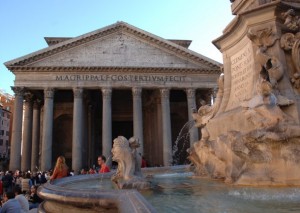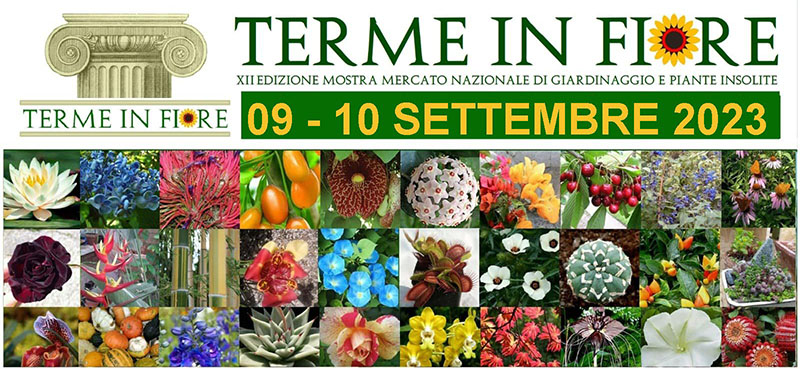










Rome in 4 days
 An itinerary leading us through the whole of Rome’s fascinating history: from its ancient ruins to the Baroque, from the Vatican to Trastevere; a route meandering through the main shopping streets as far as the futuristic district of Eur. It is an ideal path for visitors planning a four day stay who evidently have no intention of missing out anything.
An itinerary leading us through the whole of Rome’s fascinating history: from its ancient ruins to the Baroque, from the Vatican to Trastevere; a route meandering through the main shopping streets as far as the futuristic district of Eur. It is an ideal path for visitors planning a four day stay who evidently have no intention of missing out anything.
FIRST DAY
We start off from the Colosseum, the symbol of Rome par excellence with a history stretching back almost two thousand years. To the right of the Colosseum, here we are at the Arch of Constantine, Rome’s best-known triumphal arch. While just a stone’s through away we can see the Palatine Hill, where Romulus founded the Eternal City in 753 B.C.
Moving down the Via dei Fori Imperiali we come to the Roman Forum, the political, financial and religious hub of Rome, with the Imperial Forum just across the road.
A little further on, at the end of Via dei Fori Imperiali and after Piazza Venezia, there is Piazza del Campidoglio, which has been centre of city government since the XII century. Michelangelo’s stunning piazza is flanked by the Capitoline Museums, the world’s oldest national museums.
Leaving Capitol Hill to walk down Via del Corso, one of the greatest masterpieces of architecture awaits us: the Pantheon, a perfectly proportioned temple dedicated to all of Rome’s major gods.
It is time to start heading off in the direction of the Tiber to suddenly find ourselves in one of Baroque Rome’s most spectacular piazzas: Piazza Navona. The square’s Baroque style is largely attributable to Bernini’s Fountain of the Four Rivers and his rival Borromini’s Church of Sant’Agnese in Agone and Palazzo Pamphili.
By tracing our steps to Via del Corso we can discover two more celebrated sites: The Trevi Fountain and Piazza di Spagna.
The Trevi Fountain’s spectacular impact does not gradually creep up us. None of the roads in fact hinges on the Fountain itself. True, we can hear the rumblings of its waters drawing closer, but then we are totally unprepared for the amazing sight suddenly awaiting us. It is as though the curtain is raised before our eyes. It is impossible to tire of the surprise that lies in store.
Piazza di Spagna is, on the other hand, located in one of the most elegant and exclusive areas in the historic centre. Visitors are consistently captivated by its remarkable steps, which were designed by Francesco De Sanctis in the eighteenth century.
SECOND DAY
Our second day commences in the Vatican City, where visitors are literally hypnotised by the impressive splendour of the Basilica of St. Peter as soon as they start making their way down Via della Conciliazione. No photograph can do justice to the sense of marvel inspired by immensity of the building, the grandeur and by the magnificence of the adornments and works of art inside. Once here, a visit must be made to the Vatican Museums with its huge artistic wealth, the product of centuries of collecting and papal commissions.
If we turn back down the Via della Conciliazione, we will reach Castel Sant’Angelo, the papal fortress built in the Medieval period on the ruins of the tomb of the Emperor Hadrian (II century A.D).
We suggest now moving off towards Trastevere, an ideal district for a pleasant stroll through its alleys and piazzas whose colours and general atmosphere still preserve genuine Roman traits of old. Trastevere moreover offers a vast choice of restaurants and bars to spend a relaxing evening out.
THIRD DAY
Given that you have that extra day, we would advice spending it away from the historic centre at Ostia Antica’s huge archaeological site. These massive excavations provide a unique opportunity to mentally piece together a picture of what an ancient Roman town must have really looked like, to learn about everyday lives of a glorious past age, which often proves to be a rather more difficult task among the city centre’s huge public monuments.
On our return from Ostia Antica, let us get off the bus one stop before Porta San Paolo in order to take a walk through Eur, to discover a more modern Rome, a district where one is aware of a uniquely metaphysical and surreal atmosphere.
From here, after reaching the Ostiense district, it is definitely worth your while visiting the Centrale Montemartini, which merits praise as a fine example of industrial archaeology converted into a museum. To create space in the Museum of the Palazzo dei Conservatori, the Museo Nuovo and the Braccio Nuovo, while ensuring the works of art remained on public display, an exhibition was created in 1997 in the restructured rooms of the first public electricity plant in Rome.
FOURTH DAY
Much of the fourth and last day is spent in parkland.
We are in fact off in the morning to the Villa Borghese public park for a visit to the Borghese Gallery. This exquisite art gallery is home to a fine collection of masterpieces including those of Caravaggio, Canova and Bernini, to name but a few.
We recommend in the afternoon visiting the Catacombs of Appia Antica, the underground cemetery of the first Christians, situated outside of the city walls as the burial of the deceased was then prohibited in a residential area.
Finally a stroll along the original Appia Antica is the perfect way to bring your stay in Rome to a close and an opportunity to once again let those stones and relics resting in their natural environment bring history back to life again.







